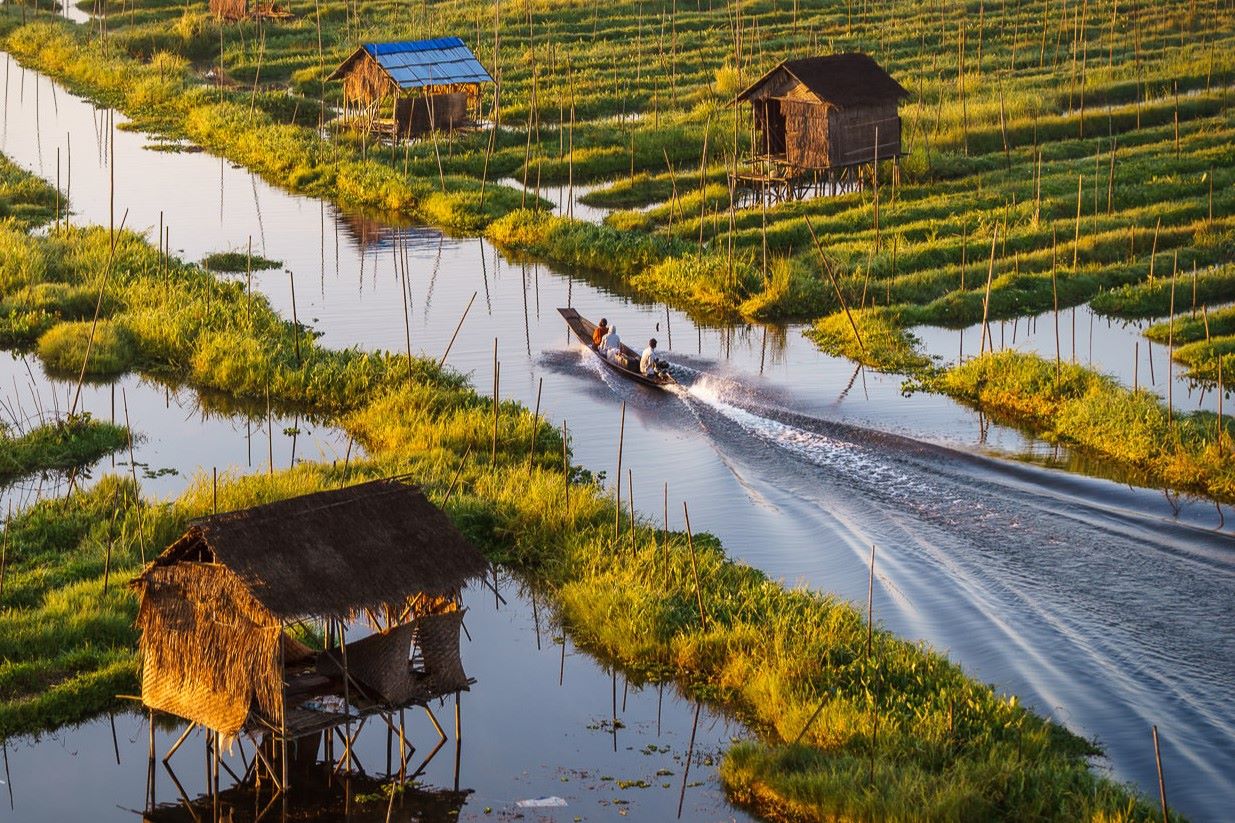Secrets Of Inle Lake Floating Gardens

Have you ever wondered how plants can grow on water? Inle Lake floating gardens in Myanmar offer a unique glimpse into this fascinating agricultural method. Farmers create these gardens by weaving together water hyacinths and other aquatic plants, then layering them with soil. These floating plots are anchored to the lakebed with bamboo poles, allowing them to rise and fall with the water level. This ingenious system not only maximizes space but also provides rich nutrients for crops like tomatoes, cucumbers, and beans. Visiting these gardens offers a rare chance to see sustainable farming in action while enjoying the serene beauty of Inle Lake.
Introduction to Inle Lake Floating Gardens
Inle Lake, located in Myanmar, is famous for its unique floating gardens. These gardens are a marvel of human ingenuity, where locals grow vegetables and flowers on the water. Let's explore some of the most fascinating aspects of these floating gardens.
How Floating Gardens Are Made
The creation of floating gardens is an art passed down through generations. Here's how they do it:
- Building the Foundation: Farmers gather water hyacinths and other aquatic plants to create a floating mat. This mat serves as the base for the garden.
- Adding Soil: They then cover the mat with a layer of mud and soil dredged from the lake bottom. This provides nutrients for the plants.
- Planting Crops: Finally, they plant seeds or seedlings into the soil. Common crops include tomatoes, cucumbers, and flowers.
Benefits of Floating Gardens
Floating gardens offer several advantages over traditional farming methods. Here are some key benefits:
- Flood Resistance: Because they float, these gardens are not affected by flooding, ensuring a stable food supply.
- Efficient Use of Space: They make use of the lake's surface, freeing up land for other purposes.
- Natural Fertilization: The lake's nutrient-rich water helps fertilize the plants, reducing the need for chemical fertilizers.
Challenges Faced by Floating Gardens
Despite their benefits, floating gardens also face challenges. Here are some of the main issues:
- Water Pollution: Pollution from nearby villages and boats can harm the plants and reduce crop yields.
- Climate Change: Changes in weather patterns can affect water levels and the health of the gardens.
- Invasive Species: Non-native plants and animals can disrupt the delicate balance of the lake's ecosystem.
Cultural Significance of Floating Gardens
Floating gardens are not just a farming method; they hold cultural importance for the local people. Here's why:
- Traditional Knowledge: The techniques used to create and maintain these gardens are passed down through generations, preserving cultural heritage.
- Community Involvement: Many families work together to maintain the gardens, fostering a sense of community.
- Tourism Attraction: These gardens attract tourists from around the world, providing a source of income for local communities.
Future of Floating Gardens
The future of floating gardens depends on several factors. Here are some possibilities:
- Sustainable Practices: Adopting sustainable farming practices can help protect the gardens from environmental threats.
- Government Support: Policies that support traditional farming methods and protect the lake's ecosystem can ensure the gardens' survival.
- Technological Innovations: New technologies can help improve the efficiency and resilience of floating gardens.
Inle Lake's floating gardens are a testament to human ingenuity and resilience. They offer a unique glimpse into a way of life that harmonizes with nature.
The Magic of Inle Lake's Floating Gardens
Inle Lake's floating gardens are a marvel of human ingenuity. These gardens, built on the water, show how people can adapt to their environment. Farmers grow vegetables and flowers on floating beds made from water hyacinth and mud. This method not only saves space but also keeps the plants well-watered.
Visiting these gardens offers a unique glimpse into the daily lives of the Intha people. You can see farmers tending to their crops from boats, a sight you won't find anywhere else. The gardens also support the local economy, providing fresh produce to nearby markets.
Exploring Inle Lake's floating gardens is a must for anyone interested in sustainable farming and unique cultural practices. The beauty and practicality of these gardens make them a standout feature of Myanmar. Don't miss the chance to experience this incredible blend of nature and human creativity.

